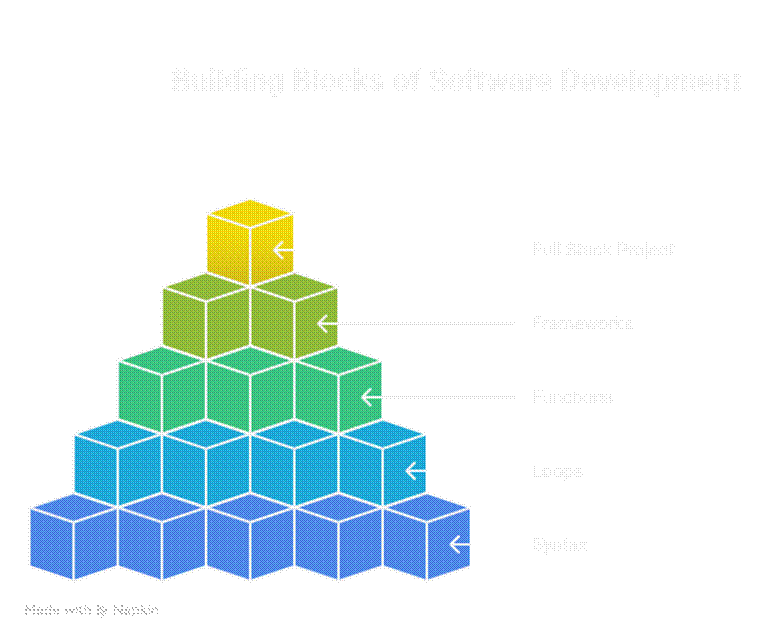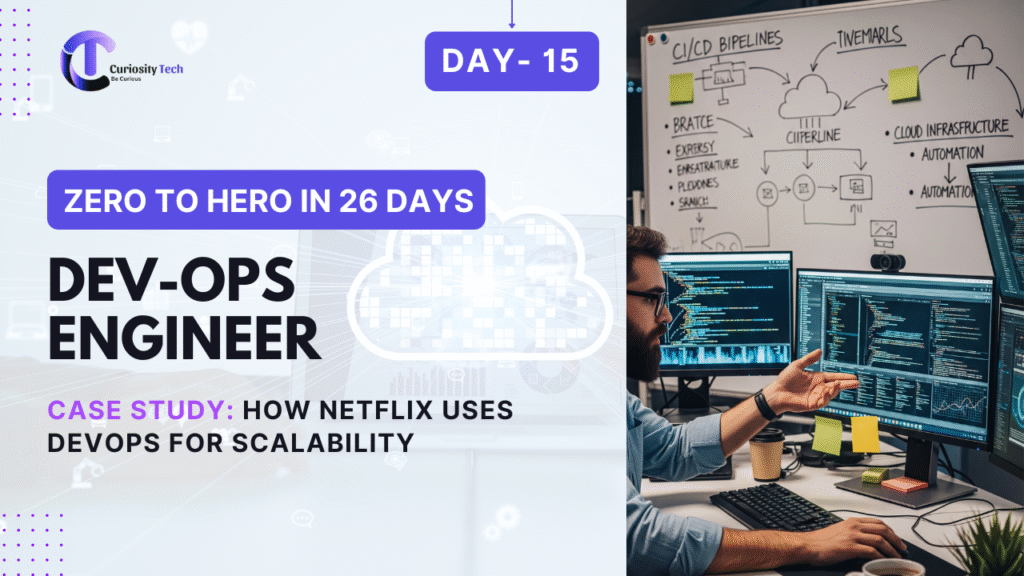Introduction
Every strong building needs a foundation, and in the world of programming, Python fundamentals form the backbone of every full stack developer’s journey. Before we dive into Django, Flask, REST APIs, or real-time WebSockets, it’s crucial to understand Python syntax, loops, and functions — the three pillars that make your code efficient, readable, and scalable.
At CuriosityTech.in, where learners and professionals collaborate to upskill, we’ve seen how developers often jump into frameworks too early and struggle later because they skipped the basics. So today’s article is all about making those basics solid, intuitive, and practice-ready.
Why Python Syntax Matters?
Python is known as the “English of programming languages” because of its clean, human-readable syntax. Unlike languages such as C++ or Java, Python avoids clutter like semicolons and braces. Instead, indentation defines structure, which forces you to write code that looks beautiful and clean.
Example: Hello World in Python
print(“Hello, CuriosityTech Learners!”)
That single line is already a valid Python program. Compare that to Java, which requires multiple lines just for setup.
Core Python Syntax Breakdown
| Concept | Python Example | Why it Matters |
| Variables | name = “Bhavesh” | Store and reuse data easily |
| Data Types | int, float, str, list, dict, tuple, set | Every data piece has a type |
| Indentation | if True:\n print(“Indented!”) | Code readability and structure |
| Comments | # This is a comment | Improve code understanding |
| Input/Output | input(“Enter your name: “) | Interaction with users |
Pro Tip from CuriosityTech’s Mentors: Write small scripts daily, instead of memorizing rules. Syntax becomes second nature when you practice.
Loops in Python
Loops automate repetition, saving developers from writing hundreds of lines of repetitive code.
Types of Loops in Python
- For Loop – Iterate over sequences like lists, tuples, or strings.
- While Loop – Repeat until a condition becomes false.
- Nested Loops – Loops inside loops, often used for working with multi-dimensional data.
Examples
# For Loop
for num in range(1, 6):
print(num)
# While Loop
count = 1
while count <= 5:
print(count)
count += 1
Infographic Idea
Functions in Python: Reusability at its Best
Functions let us package logic into reusable blocks, keeping code DRY (Don’t Repeat Yourself).
Defining a Function
def greet(name):
return f”Hello, {name}!”
Calling greet(“Bhavesh”) returns Hello, Bhavesh!
Types of Functions
- Built-in Functions → len(), print(), input()
- User-defined Functions → Created with def
- Lambda Functions → One-liners using lambda
- Recursive Functions → Call themselves (useful in algorithms like factorials, tree traversal)
Comparison Table: Functions
| Function Type | Example | Use Case |
| Built-in | len(“CuriosityTech”) | Quick utilities |
| User-defined | def add(a,b): return a+b | Custom logic |
| Lambda | lambda x: x*2 | One-liners, filters, maps |
| Recursive | def fact(n): return n*fact(n-1) | Mathematical/logical recursive problems |
Real-World Abstraction
Imagine a CuriosityTech workshop registration system:
- Syntax helps you declare variables like student_name and course_selected.
- Loops help you print certificates for 100+ students automatically.
- Functions ensure you don’t rewrite code for generating each student’s details.
This is why every full stack project — from a blog system to an e-commerce site — relies on these fundamentals.
Description of a Visual Aid
📌 Hierarchical Diagram showing
Syntax → Loops → Functions → Frameworks → Full Stack Project
This hierarchy shows how fundamentals evolve into complete applications.

Conclusion
Mastering Python syntax, loops, and functions is like learning to read, write, and compose sentences before writing a novel. Skipping this step means you’ll always struggle when debugging or scaling applications. As CuriosityTech.in emphasizes, learning full stack isn’t about shortcuts but building solid, scalable habits. With these fundamentals, you’re ready to move toward frameworks like Flask and Django.
SEO Elements
- Keywords: Python syntax, Python loops, Python functions, Python fundamentals for full stack, CuriosityTech Python course
- Tags: #Python #FullStack #CuriosityTech #ProgrammingBasics
- Meta Description: Learn Python syntax, loops, and functions with practical examples. A solid foundation for every aspiring Python Full Stack Developer in 2025.



